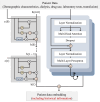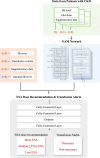Optimizing anemia management using artificial intelligence for patients undergoing hemodialysis
- PMID: 39500941
- PMCID: PMC11538268
- DOI: 10.1038/s41598-024-75995-w
Optimizing anemia management using artificial intelligence for patients undergoing hemodialysis
Abstract
Patients with end-stage kidney disease (ESKD) frequently experience anemia, and maintaining hemoglobin (Hb) levels within a targeted range using erythropoiesis-stimulating agents (ESAs) is challenging. This study introduces a gated recurrent unit-attention-based module (GAM) for efficient anemia management among patients undergoing chronic dialysis and proposes a novel alert system for anticipating the need for red blood cell transfusions. Data on demographic characteristics, dialysis metrics, drug administration, laboratory tests, and transfusion history were retrospectively collected from patients undergoing hemodialysis at Kangwon National University Hospital between 2017 and 2022. After preprocessing, a final dataset of 252 patients was used for model training. Our model functions in two major phases: (1) Hb level prediction and ESA dose recommendation and (2) transfusion alert framework. The GAM model outperformed traditional machine learning algorithms, including linear regression, XGBoost, and multilayer perceptron, in predicting Hb levels (R-squared value = 0.60). The model also demonstrated a recommendation accuracy of 0.78 compared to that of clinical experts, indicating a high degree of concordance with the ESA dosing recommendations. Additionally, the model exhibited considerably high accuracy (0.99) for transfusion alarms. Thus, the GAM model holds promise for improving anemia management in patients with ESKD by optimizing ESA dosages and providing timely transfusion alerts.
Keywords: Anemia; Artificial intelligence; End-stage kidney disease; Erythropoiesis-stimulating agents; Transfusion alert.
© 2024. The Author(s).
Conflict of interest statement
The authors declare no competing interests.
Figures




References
-
- United States Renal Data System. USRDS Annual Data Report: Epidemiology of Kidney Disease in the United States (National Institutes of Health, National Institute of Diabetes and Digestive and Kidney Diseases, 2022).
-
- Liyanage, T. et al. Worldwide access to treatment for end-stage kidney disease: a systematic review. Lancet. 385, 1975–1982. 10.1016/S0140-6736(14)61601-9 (2015). - PubMed
-
- Kovesdy, C. P., Davis, J. R., Duling, I. & Little, D. J. Prevalence of anaemia in adults with chronic kidney disease in a representative sample of the United States population: analysis of the 1999–2018 National Health and Nutrition Examination Survey. Clin. Kidney J. 16, 303–311. 10.1093/ckj/sfac240 (2023). - PMC - PubMed
-
- Lefebvre, P. et al. Relationship between hemoglobin level and quality of life in anemic patients with chronic kidney disease receiving epoetin alfa. Curr. Med. Res. Opin. 22, 1929–1937. 10.1185/030079906x132541 (2006). - PubMed
-
- Locatelli, F. et al. Anaemia in haemodialysis patients of five European countries: association with morbidity and mortality in the Dialysis outcomes and practice patterns study (DOPPS). Nephrol. Dial Transpl. 19, 121–132. 10.1093/ndt/gfg458 (2004). - PubMed
MeSH terms
Substances
Grants and funding
LinkOut - more resources
Full Text Sources
Medical

